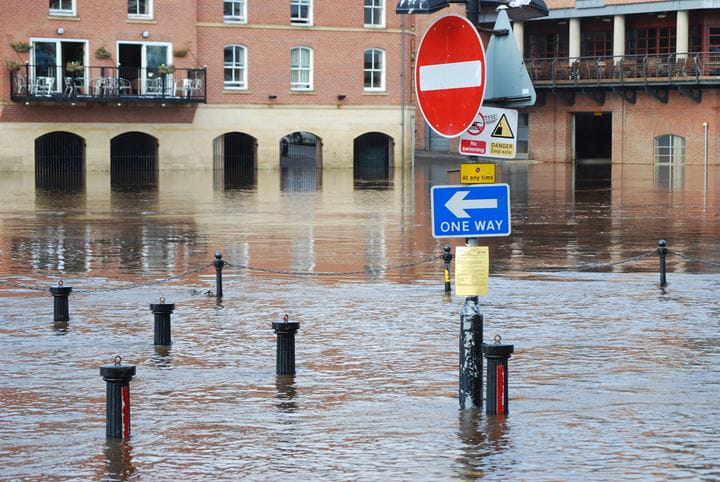With inflation already at a 40-year high and predicted to rise further in 2022 – eventually reaching an eye-watering 10% in the final quarter of the year – households and businesses across the UK are feeling the pinch.1
Unfortunately, high inflation is being compounded by an economic slowdown, with the three main sectors of the UK economy – manufacturing, construction and the service sector – all shrinking during April 2022.2 As a result, many economists now predict that the UK will have the highest rate of inflation of the G7 nations until 2024.3
As most people know, the rate of inflation – or how fast the price of goods and services rise over time4 – has implications for the cost of living, but it also has some less obvious impacts that could be just as serious.
Watch our inflation risks roundtable to see what our experts had to say.
Inflation and underinsurance risk
One such implication is the increased risk of underinsurance – when the level of insurance taken out is not enough to cover the cost of rebuilding, repairing or replacing insured items following a claim.
Clearly, a high rate of inflation tells us that prices are rising fast, so even insurance that may have been appropriate six months ago, may now be insufficient – for instance rising material costs may mean the cost of re-instating a property may now exceed the cost declared in a property insurance policy. Similarly, if an insured asset has risen beyond the value declared in an insurance policy, this can also create an underinsurance risk.
Condition of average
Consequences of underinsurance become apparent when the time comes to make a claim. Insurers commonly apply a ‘Condition of Average’ in cases of underinsurance. In essence, this enables an insurer to reduce claim settlements by a percentage corresponding to the amount of underinsurance – if a property is underinsured by x% then the claim is reduced by x%.
By way of example, a property owner insures their property for £100,000. Their property is impacted by fire, so they lodge a claim. During the claims process, the property is found to have a replacement cost of £150,000 – thereby underinsured by 33%. There is fire damage to 75% of the property and it is going to cost around £112,500 to cover the repair. However, the insurer will most likely apply the ‘Condition of Average’, and the property owner could receive just £75,000 towards that £112,500 repair cost due to underinsurance of the property.
In significant cases of underinsurance, an insurer could even declare a policy as void – arguing that the client failed in their duty of fair presentation under the Insurance Act – and remember, it is the responsibility of the person taking out insurance to check that valuations provided for insurance purposes are accurate.
Which insurance types are affected?
This is a risk that applies to both personal and business insurance, since both are affected by high rates of inflation. It also applies to a wide range of insurance types - in fact, to any insurance cover where the cost of replacing or repairing an asset being insured is rising due to inflation.
What’s more, the risk is not just restricted to assets. For instance, if high rates of inflation, coupled with supply chain issues, mean it now takes longer to re-instate a business premises after a serious incident, then business interruption insurance indemnity periods – the period of time when a policy will help to cover lost earnings for example – may not be sufficient either.
Act now to address underinsurance
The bottom line is that high rates of inflation are creating a serious underinsurance risk for both personal and commercial insurance, and – given the potential financial impacts that can follow – it is important to address this risk now, rather than waiting for renewal times to come around. Inflation is as much today’s problem as it is tomorrow’s.
With that in mind, we recommend you contact your insurer or broker to discuss your insurance arrangement and check that they remain appropriate in the face of such high rates of inflation. That means looking at ’declared asset values’ – essentially the insured value of properties and other assets – to make sure they are still accurate, and update where necessary. Similarly, in the case of business interruption insurance, speak to your insurer or broker about whether the indemnity period is long enough to protect the business after an incident in the current climate, and adjust if necessary.
Help is at hand
If you are concerned about underinsurance and would like help and support reassessing your needs, we are here to help. If you are a Marsh Commercial client, please get in touch with your Account Executive – and for anyone else, contact your local office for confidential advice and guidance.
Is your property fully insured?
We work with RebuildCostASSESSMENT* to offer our clients the peace of mind that comes with accurate insurance valuations based on multiple data sources. *subject to qualifying criteria.
Inflation risks roundtable
Real-world insight that we don't share anywhere else
Get access to exclusive help, advice and support, delivered straight to your inbox.











